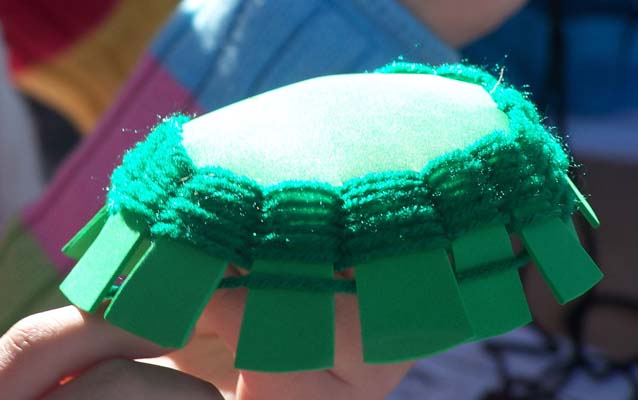
NPS

NPS
Discover and investigate the wonders of Casa Grande Ruins National Monument. At your morning arrival your group of 50 students total (maximum) will be divided into smaller workgroups. Workgroups rotate through several learning stations including visiting the Great House, doing a hands-on activity, viewing the park film, and visiting the museum, depending on your time, interests, and requests. Students should expect to be outside most of the visit and plan accordingly. Water bottles, hats, sunscreen, and appropriate clothing are a MUST have for each person.
Each workgroup of 5 to 7 students will stay with their assigned chaperone throughout their entire park visit (all groups must have adult chaperones with a ratio of one adult per 5 to 7 students, for example a group of 50 students would be expected to bring 7 to 10 chaperones). This is to provide a positive learning experience, respect the rights of other visitors, and protect the important resources we manage.
Our main program requires at least one and one half hours to work with the students and can be followed by lunch in the park picnic area. We would most prefer two hours with the students followed by lunch. If your time permits, after all of the students have eaten, we will play a large group game while we wait for the buses to be readied for student departure.
Students may be asked to work with their chaperone without a ranger or volunteer guide. The student workbooks will lead them from point to point and suggest topics for discussion. They are based on the wayside exhibits in the park. There is more information in the student workbook than can be covered in one hour so the teacher should plan how in-depth to go in the studies. Teachers need to plan their own follow-up in school after the park visit to bring closure to the workbook process.
The topics that will be covered include Hohokam Culture agriculture and plant use, Hohokam Culture trade, and the building and use of the Casa Grande. The agriculture station could be learning about cotton and working to remove the seeds, or perhaps using a mano and metate to grind mesquite beans or corn into flour. The trade station includes making a modern sample in the tradition of the Hohokam Culture and could include weaving a small yarn basket, using a pump drill to create a balsa wood necklace, folding a personal "split twig" figure from a pipe cleaner, using Crayola clay to make a pinch pot, or other similar arts. The exact stations that are offered on the day of your visit are "ranger's choice" as they will depend on staffing and materials available. The group game is a summary of the program where the students are reminded that food, water, shelter, and space are required by all living things and affect the lives of all living things.
While the students are in the park they will be reminded:
-Please respect the environment during your visit. This includes plants, animals, the ruins, other people and yourself. Even the park rattlesnakes are part of the park environment and should not be harmed or harassed.
- Please stay off the walls and the ruins. Archeological sites are very fragile. Sitting, climbing, jumping over, or crawling over the ruins not an acceptable behavior. The ruins are not a playground.
- Please leave artifacts where you find them. If you see a piece of pottery or other artifact, tell a ranger. We'll examine it together and leave it in place. Where and how it is found may be just as important as what is found.
- Please don't share your food with the ground squirrels. They will eat it but it isn't good for them.
- Please don't add any graffiti to the ruins. What would your parents say if you wrote on the walls at school or at home?
- Please stay out of the closed areas unless you are with a ranger. These areas are closed because they are fragile. We also want you stay safe and the closed areas are less safe than the public areas of the park.
As you make your plans you are reminded:
-Please make reservations at least three weeks in advance of your intended arrival. You will need at least one and one half hour for a group of 20 to 50 students. Maximum group size is 50 students.
-A minimum of one adult chaperone per five to seven students is mandatory. Each chaperone must supervise the students specifically assigned to them at all times.
-Please inform all adults and students of above reminders prior to your visit.
-BUS PARKING is located east of the visitor center past the service entrance road. Please have the bus park so students can unload onto the sidewalk and inform bus drivers that they must turn off their engines during the visit.
-BEFORE students are unloaded from the bus, the group leader should inform a ranger at the front desk that the group has arrived.
-Please keep students on the sidewalks to avoid accidents in the parking lot area.
-Educational programs are offered free of charge for all participants.